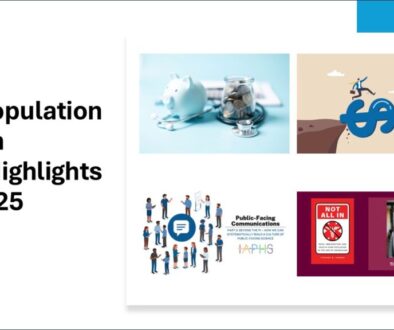Inclusive Research Methods: A Foray into the Literature, Part 1
Margaret D. Whitley, Sheri Notaro, Ai Rene Ong
The University of Michigan’s Institute for Social Research (ISR) is recognized nationally and internationally for its research and education programs. These include widely used population surveys such as the Health and Retirement Study, the Panel Study of Income Dynamics, and many others, plus rigorous educational offerings, including pre- and postdoctoral training programs and summer courses. The ISR works to promote Diversity, Equity and Inclusion (DEI) across its programs, an effort spearheaded by Sheri Notaro during her two-plus years as director. One element of ISR’s broader DEI effort is its Educational Programs Working Group. This group, which all three authors participated in, explores and promotes DEI topics pertinent to education at ISR.
To foster conversation and knowledge about DEI and research methods, the Educational Programs Working Group created the Inclusive Research Matters seminar series. In this seminar series, available free online, experts from UM and beyond discussed methodological issues that impact DEI in research, such as response styles (Fernanda Alvarado-Leiton, Rachel Davis and Sunghee Lee), accessible survey design (Scott Crawford), diversity in online samples (Frances Barlas), and bias due to invalid and mischievous survey responses (Joseph Simpian).
Our approach to defining “Inclusive Research Methods”
Initially, we had not decided on a definition for “inclusive research methods” or identified a specific research paradigm or perspective within which we would work. Our organic approach worked well enough, but when a UM staff member asked us to suggest one or two seminal papers about inclusive research methods to share with students, we dove into the literature. Not surprisingly, we identified a range of papers that enhanced our understanding of inclusive research. The process pushed us to consider with greater intention what we meant by “inclusive research methods,” and how other scholars have used the term.
We had thought of inclusive research as a methodology (or set of methodologies), but we came to see it as more of an overarching research framework or ideology. So we summarized papers that examined inclusivity in research from the level of paradigms and broad approaches (e.g., Indigenous research paradigm, public health critical praxis), to constructs (e.g., families), to study design and analysis (e.g., quantcrit). We couldn’t read every relevant paper, but in these blog posts, we highlight some that we found particularly valuable.
Value in defining and discussing Inclusive Research Methods
The Kauffman Foundation, a Kansas-based grantmaking organization, offers a useful description of inclusivity in research. They note that research inclusivity should go beyond simply bringing in “phenotypically different” scholars, suggesting that diversity in life experiences should also be represented, and that the research should be relevant and actionable.
Overall, we identified the importance of works that:
- included participation from researched populations
- worked through a more holistic lens that’s less centered on privileged (e.g., white, able-bodied, male) perspectives and that considers the benefit to researched populations
- asked basic questions about the relationship between the researcher and the researched, who owns the results, and why we do research to begin with
- established why inclusivity, diversity, and equity in research methods matter
- offered guiding principles that we can consider regardless of the methods and populations we use and the research questions we ask
In part two of this two-part blog series, we offer examples of works that helped us define Inclusive Research Methods. Check back with the IAPHS blog next week.







All comments will be reviewed and posted if substantive and of general interest to IAPHS readers.